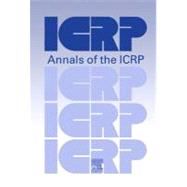Lung Cancer Risk from Radon and Progeny and Statement on Radon: Annals of the Icrp
, by Clement, C. H.- ISBN: 9780702049774 | 0702049778
- Cover: Paperback
- Copyright: 4/1/2012
Abstract - Recent epidemiological studies of the association between lung cancer and exposure to radon and its decay products are reviewed. Particular emphasis is given to pooled case-control studies of residential exposures and to cohorts of underground miners exposed to relatively low levels of radon. The residential and miner epidemiological studies provide consistent estimates of lung cancer risk with statistically significant associations observed at average annual concentrations of about 200 Bq m-3 and cumulative occupational levels of about 50 WLM, respectively. Based on recent results from combined analyses of epidemiological studies of miners, a lifetime excess absolute risk of 5 × 10-4 per WLM (14 × 10-5 per mJ h m-3) should now be used as the nominal probability coefficient for radon and radon progeny induced lung cancer, replacing the previous ICRP Publication 65 value of 2.8 × 10-4 per WLM (8 × 10-5 per mJ h m-3). Current knowledge of radon associated risks for organs other than the lungs does not justify the selection of a detriment coefficient different from the fatality coefficient for radon-induced lung cancer. ICRP Publication 65 recommended that doses from radon and its progeny should be calculated using a dose conversion convention based on epidemiological data. It is now concluded that radon and its progeny should be treated in the same way as other radionuclides within the ICRP system of protection; that is, doses from radon and radon progeny should be calculated using ICRP biokinetic and dosimetric models. ICRP will provide dose coefficients per unit exposure to radon and radon progeny for different reference conditions of domestic and occupational exposure, with specified equilibrium factors and aerosol characteristics.







